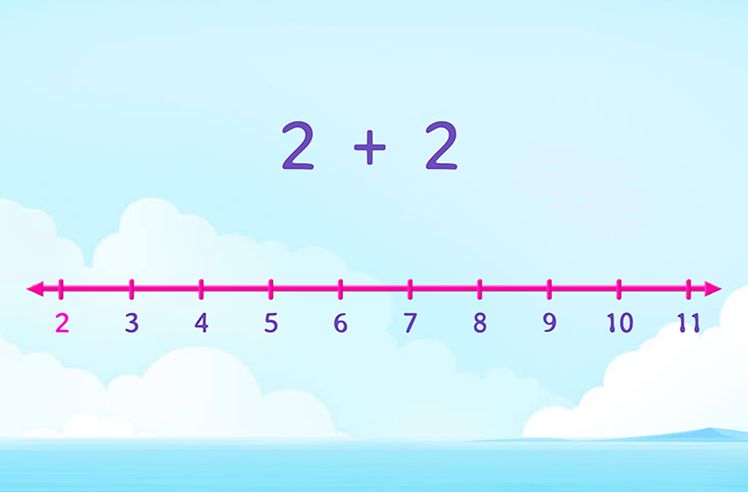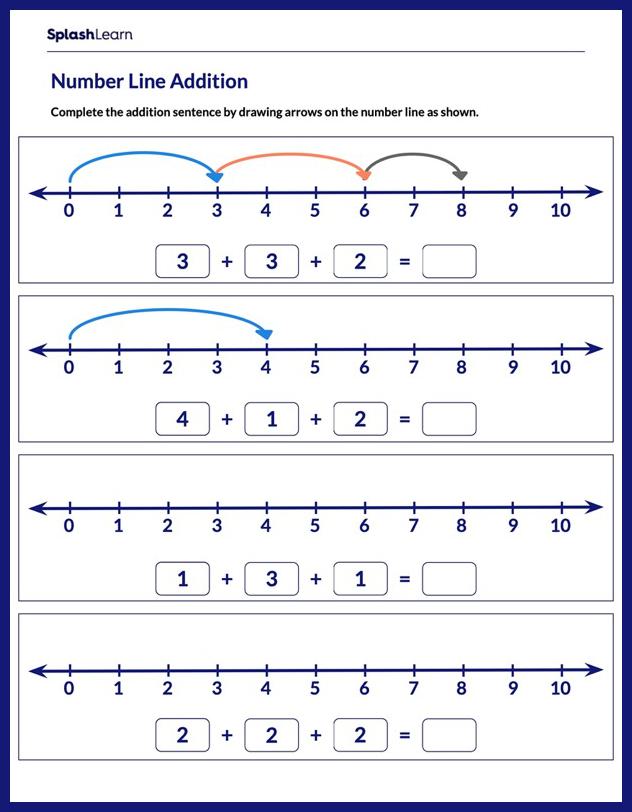What Is the Slope-Intercept Form of a Straight Line?
The slope-intercept form of the equation of a straight line is used to write the equation of a line using its slope and the y-intercept. It is usually given by y = mx + b.
The slope of a line is given by the rise-over-run ratio. The y-intercept is the point where the line intersects with the Y-axis.
Recommended Games
Slope-Intercept Form: Definition
The slope intercept form is a way of writing the equation of the straight line using the slope and the y-intercept of the line.
The equation of a line with slope m and y-intercept b is written in the slope-intercept form as
$y = mx + b$
where
(x,y) represents the coordinates of any point on the line.
However, the slope-intercept formula of the straight line cannot be used to write the equation of a vertical line because the slope of the vertical line is not defined.
Recommended Worksheets
Slope-Intercept Form: Formula
The equation of a straight line in the slope-intercept form is given by
$y = mx + b$
Where
m equals the slope
b represents the y-intercept of the straight line
(x,y) determines each point on the straight line and is considered as variable.
Derivation of Formula For Slope-Intercept Form
Let us assume that a line with a slope m has the y-intercept b. It means that the line intersects the y-axis at the point (0, b).
Let (x,y) be another random point on the line.
Thus, we have the coordinates of two points on the line.
$(x_{1},\; y_{1}) = (0,\;b)$ and $(x_{2},\; y_{2}) = (x,\;y)$
Alt Text: Graphical representation of the slope-intercept form equation of a straight line.
We know that the slope of a line passing through the points $(x_{1},\; y_{1})$ and $(x_{2},\; y_{2})$ is given by
$m = \frac{(y_{2}\;-\;y_{1})}{(x_{2}\;-\;x_{1})}$
For $(x_{1},\; y_{1}) = (0,\;b)$ and $(x_{2},\; y_{2}) = (x,\;y)$, we can write
$m = \frac{(y \;-\; b)}{(x \;-\; 0)}$
$m = \frac{(y \;-\; b)}{x}$
$mx = (y\;-\;b)$
$y = mx + b$
This is called the slope-intercept form of the equation of a straight line.
Slope-Intercept Form: Examples
- Suppose the slope is $-2$ and the y-intercept is 5. The equation of the line is given by
$y = \;-\;2x + 5$
- Slope $= 5$ and the line passes through the origin (0, 0). The equation of line is given by
$y = 5x$
Straight Line Equation Using Slope-Intercept Form
To evaluate the line equation with an arbitrary inclination, two quantities are required, i.e.,
- Inclination/slope of the line
- Arrangement of the line based on the coordinates of each point on the y-axis
Lines can be formed using these two key parameters. Let us know the steps to evaluate what the slope-intercept form of a line is.
Step 1: Find the slope (m) of the line using the given information.
- If θ is the angle the line makes with the positive x-axis, the slope of the straight line = tan θ.
- If $(x_{1},\; y_{1})$ and $(x_{2},\;y_{2})$ are two points on the line, then the slope of the straight line $= \frac{(y_{2}\;-\;y_{1})}{(x_{2}\;-\;x_{1})}$.
Step 2: Note down the y-intercept (b).
Step 3: Substitute the values in the slope-intercept form $y = mx + b$ to find the equation of the straight line.
Converting Standard Form to slope-intercept Form
A standard form equation of a line can easily be converted to the slope-intercept form by comparison and rearrangement of the points. Let us explore the standard equation represented as follows:
$Ax + By + C = 0$
where A, B, C are constants;
A, B cannot be simultaneously 0.
Let’s rewrite it as
$By = \;-\; Ax\;-\;C$
B rearranged from LHS to RHS, i.e., from multiplication to division on the other side, we get
$y = (\frac{-\;A}{B})x + (\frac{-\;C}{B})$
Therefore, we get
- slope $= m = (\frac{-\;A}{B})$
- y-intercept $= b = (\frac{-\;C}{B})$
Facts about the Slope-Intercept Form
- The slope-intercept form is also written as $y = mx + c$, where m is the slope and c is the y-intercept.
- The slope-intercept form of the equation of a line having slope m and passing through the origin is $y = mx$.
Conclusion
In this article, we learned about the slope-intercept form, which is used to find the equation of the straight line using the slope and the y-intercept. It is given by y = mx + b. We learned the formula, and its derivation. Let’s solve a few examples and practice problems to master these concepts.
Solved Examples of Slope-Intercept Form of Line
1. Evaluate the straight line equation where slope $m = 4$ passes via the point $(\;-\;1, \;-\;3)$.
Solution:
Let the equation of line be $y = mx + c$.
Slope of the line is $m = 4$
The line passes through the point $(\;-\;1,\; -\;3)$. Let’s use it to find the y-intercept.
Substitute $y = \;-\;3$ and $x = \;-\;1$ in $y = mx + c$.
Putting the values in the above slope-intercept formula, we will obtain
$\;-\;3 = 4(\;-\;1) + b$
$\;-\;3 = \;-\;4 + b$
$b = \;-\;3 + 4$
$b = 1$
Thus, we have $m = 4$ and $b = 1$.
Using the slope-intercept form, we write the equation of the line as
$y = 4x + 1$
2. Evaluate the equation of the straight line when $m = \;-\;2$ and passes through the point $(3,\; -\;4)$.
Solution:
Let the equation of line be $y = mx + b$.
The line passes through $(3,\; -\;4)$.
Thus, the point satisfies the equation.
$-\;4 = \;-\;2 (3) + b$
$\;-\;4 = \;-\;6 + b$
$b = \;-\;4 + 6$
$b = 2$
Thus, the y-intercept is 2.
Therefore, the required slope-intercept form equation of the straight line will be written as $y = \;-\;2x + 2$
3. Write the equation of line $7x + 8y \;-\; 1 = 0$ in the slope-intercept form. Find the slope and y-intercept.
Solution:
We want to write the equation of the line in the form $y = mx + b$.
$7x + 8y \;-\; 1 = 0$
$\Rightarrow 8y = \;-\;7x + 1$
$\Rightarrow y = \frac{-\;7x}{8} + \frac{1}{8}$
The slope of the line is $\frac{-\;7x}{8}$.
The y-intercept is $\frac{1}{8}$.
Practice Problems on slope-intercept Form of a Line
Slope Intercept Form - Definition, Formula, Facts, Examples
What is the slope-intercept form of a line formula?
The slope-intercept form of a line is given by $y = mx + b$.
If slope $= 1$ and y-intercept $= 1$, the equation of line is
Substitute $m = 1$ and $b = 1$ in $y = mx + b$, we get $y = x + 1$.
The equation of a line with slope m and passing through the origin is
The slope of a line with slope m that passes through the origin is $y = mx$.
What will be the y-intercept of equation $2x + 5y \;-\; 1 = 0$?
$5y = 1\;-\; 2x$
$y = \frac{\;-\;2x}{5} + \frac{1}{5}$
Thus, y-intercept $= \frac{1}{5}$
Frequently Asked Questions on Slope-intercept Form of a Line
When can we apply the slope-intercept form?
We use the slope-intercept form to find the equation of the line when the slope and the y-intercept is known or can be calculated using the available information.
What is the purpose of the slope in the slope-intercept form?
The slope of the line determines if the line is increasing or decreasing and how steep it is established. It is denoted by m and represents how quickly y-axis coordinates change with the slight change in x-axis coordinates.
How is the point-slope form different from the slope-intercept form?
Slope-intercept form and point-slope form are two different forms to write the equation of a straight line.
Point-slope form: $y \;-\; y_{1} = m(x \;-\; x_{1})$, where m the slope and $(x_{1},\;y_{1})$ are the coordinates of any arbitrary point on the line.
slope-intercept form: $y = mx + b$, where m the slope and b is the y-intercept.
Why is slope-intercept form not used for vertical lines?
The slope-intercept form is not used for vertical lines, as the slope of a vertical line is not defined.
What is the main advantage of the slope-intercept form?
We can easily identify the slope and the y-intercept of the line by looking at the slope-intercept form.




































